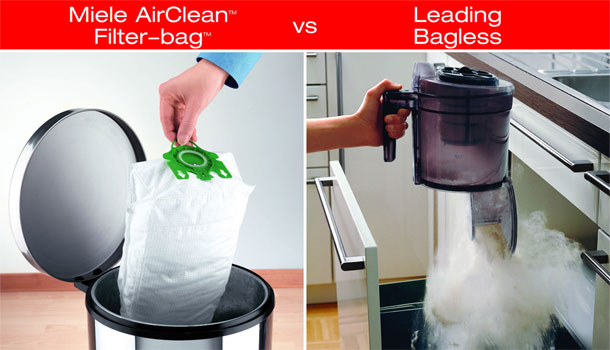| appliance resource center |
Is your bagless vacuum bad for your health?
If you have a bagless vacuum, you’re probably familiar with the smell (or taste!) of dust when you empty the bin after vacuuming. Probably when you’re knocking it against the side of the garbage can, trying to hold your breath? Gross, I know. If you can smell that dust, it means you’re inhaling fine, lung-damaging particles, according to information released today by German appliance-maker Miele.
But, aside from that, bagless vacuums – even those with HEPA filters – can’t truly contain all the dust and dirt as well as a Miele.

From the release:
An independent laboratory confirmed that Miele vacuums capture and retain 99.99% of harmful pollutants – on average 21x better than the HEPA-filtered bagless rival. On average, the leading bagless HEPA-filtered vacuum emitted over 175,900 lung-damaging particles per minute during the test.
This isn’t the first time I’ve talked about my love for Miele vacuums. But truly, if air quality matters to you, you’ll appreciate Miele’s air-tight design. A spring-loaded collar locks shut when you remove Miele vacuum bags, trapping in particles and eliminating that dusty smell/taste – which means you and your kids aren’t breathing them in.
And perhaps this seems a tad dramatic, but what you’re breathing in (fine particulate matter) has been linked to bad health effects such as including chronic bronchitis and premature death, according to the Environmental Protection Agency.
For families with children or elderly, sufferers of asthma and/or allergies or other health problems, a Miele vacuum is a sound investment. Plus, we ship all vacuums for free, and we also offer free shipping on accessories (bags and air filters) orders over $50.